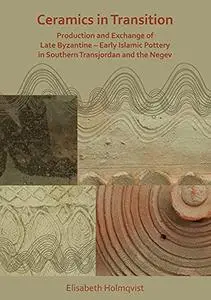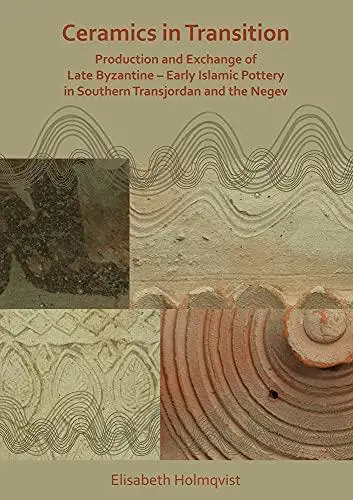Ceramics in Transition: Production and Exchange of Late Byzantine-Early Islamic Pottery in Southern Transjordan and the Negev By Elisabeth Holmqvist
2019 | 206 Pages | ISBN: 1789692245 | PDF | 25 MB
2019 | 206 Pages | ISBN: 1789692245 | PDF | 25 MB
Ceramics in Transition focuses on the utilitarian ceramic traditions during the socio-political transition from the late Byzantine into the early Islamic Umayyad and ‘Abbasid periods, c. 6th–9th centuries CE in southern Transjordan and the Negev. These regions belonged to the Byzantine province of Palaestina Tertia, before Islamic administrative reorganisation in the mid-7th century. Cooking ware and ceramic containers were investigated from five archaeological sites representing different socio-economic contexts, the Jabal Harûn monastery, the village of Khirbet edh-Dharih, the port city of ‘Aqaba/Aila, the town of Elusa in the Negev, and the suburban farmstead of Abu Matar. The ceramics were typo-chronologically categorised and subjected to geochemical and micro-structural characterisation via X-ray fluorescence spectrometry (ED-XRF) and scanning electron microscopy (SEM-EDS) to geochemically ‘fingerprint’ the sampled ceramics and to identify production clusters, manufacturing techniques, ceramic distribution patterns, and material links between rural-urban communities as well as religious-secular communities. The ceramic data demonstrate economic wealth continuing into the early Islamic periods in the southern regions, ceramic exchange systems, specialized manufacture and inter-regional, long-distance ceramic transport. The potters who operated in the southern areas in the formative stages of the Islamic period reformulated their craft to follow new influences diffusing from the Islamic centres in the north.Table of ContentsPreface Chapter 1 Introduction Chapter 2 Southern Transjordan and the Negev in the late Byzantine and early Islamic periods Chapter 3 Archaeological sites Chapter 4 Ceramic technologies, provenance and exchange Chapter 5 Catalogue of the analysed ceramic artefacts Chapter 6 Geochemical and microstructural ED-XRF and SEM-EDS data Chapter 7 From production centres to regional and inter-regional ceramic transport Chapter 8 Ceramic data in context: analytical, archaeological and historical evidence Bibliography Appendices I-VIII



